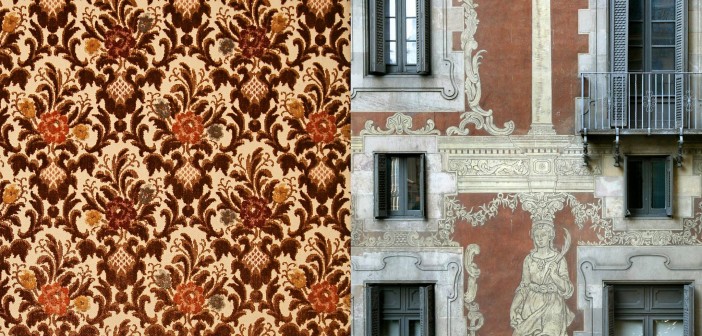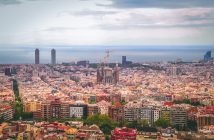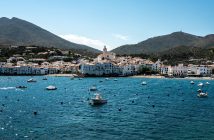Everyone who lives in, visits, or even hears about Barcelona knows about Gaudi; how could we not, when his work is all over the city? However, his works of art are not the only architecture that you should pay attention to: in the Gothic Quarter of Barcelona hides a relatively unknown building that holds a ton of history named La Casa de la Seda (the House of Silk). Built by Joan Garrido Bertràn between 1758 and 1763, declared a Monument of National Interest in 1919, and winning the Gold Medal of the City of Barcelona in 1929, it is one of the few baroque buildings in Barcelona with a very important past.
The History
 While silk may be somewhat more common in today’s products, it was not always the case. In the past, silk was a rare commodity that only a few of the high aristocracy could afford. While silk was originally created in China, it has been a part of the Catalonian culture since the 15th century. Due to the close ties between Catalonia and textile production, including the large influx of woolen and cotton mills throughout the early 1900s, many of the guilds (groups of workers, much like today’s unions) within Catalonia created veils out of this silk.
While silk may be somewhat more common in today’s products, it was not always the case. In the past, silk was a rare commodity that only a few of the high aristocracy could afford. While silk was originally created in China, it has been a part of the Catalonian culture since the 15th century. Due to the close ties between Catalonia and textile production, including the large influx of woolen and cotton mills throughout the early 1900s, many of the guilds (groups of workers, much like today’s unions) within Catalonia created veils out of this silk.
In the past, there were 7 major guilds who were related to the production of silk. While they were originally separate, the guilds wanted to own a headquarters together in order to maintain a relationship with the other guilds, while increasing the quality of their products. At first, the guilds chose to stay at the Church of Santa Ana, and from there moved to the Monastery of Santa Caterina. Finally, in 1764, El Col·legi d’Art Major de la Seda (the College of Silk Art) inaugurated their new headquarters at Sant Pere Mes Alt, #1, where La Casa de la Seda stands today.
Décor/Façade
As stated before, La Casa de la Seda is well known for being one of the few baroque buildings left in Barcelona.  What really adds to the presence of such a building is the design of the building, on both the inside and outside. For instance, the façade of the building is covered in a sgraffito decoration, which is a technique produced by applying layers of plaster tinted in contrasting colors in order to construct a unique look. In addition to this, there are several Baroque-inspired moldings around the windows and balconies of the building, including one of Our Lady of the Angels, patroness and protector of all veil weavers.
What really adds to the presence of such a building is the design of the building, on both the inside and outside. For instance, the façade of the building is covered in a sgraffito decoration, which is a technique produced by applying layers of plaster tinted in contrasting colors in order to construct a unique look. In addition to this, there are several Baroque-inspired moldings around the windows and balconies of the building, including one of Our Lady of the Angels, patroness and protector of all veil weavers.
On the inside of the building, the rooms are constructed similarly with fine woodwork floors, silk-lined walls, and decorative elements to portray an air of luxury and style. Due to the fact that many important commercial and political decisions were being made in this important building, it was only natural that the décor of the building fit the part. In addition to the actual looks of the rooms, many historical objects relevant to the guilds are still kept inside the building, like the 18th century ivory Christ in the presidential office or the bookcase decorated with floral and religious paintings by one of the guilds (the Masters of Veils) in 1683. With these objects are an archive of the guild history that include more than 3,000 documents from 1533 until today.
Other Information
In order to visit La Casa de la Seda, you need to join one of their many guided tours around the building. These visits include the main guild room sporting all of the décor mentioned in the previous section, the library also aforementioned, and the presidential office and the meeting room. Each tour lasts around 50 minutes, and costs €10 per adult (€8 for anyone with a discount, including under 18, seniors, and students), while children under 11 years of age get in free. Tours are in English, French, Italian, Spanish, and Catalan, so make sure to check what time each language’s tour is.
Overall, La Casa de la Seda is an important part of Barcelona’s history, and while not as well known as some of the other architectural structures in Barcelona, it is undoubtedly just as significant. For more information, visit La Casa de la Seda’s website.



